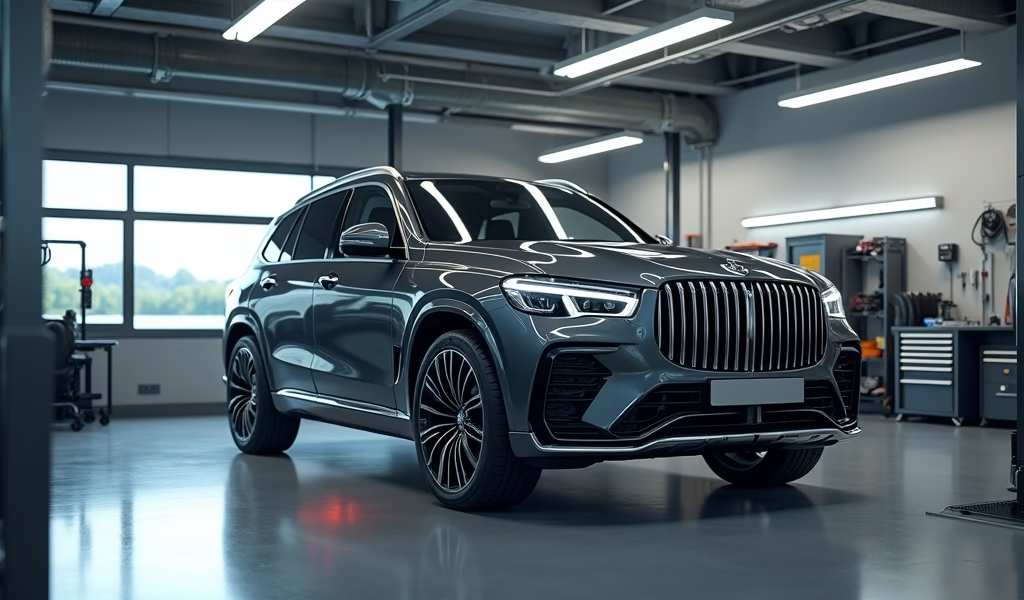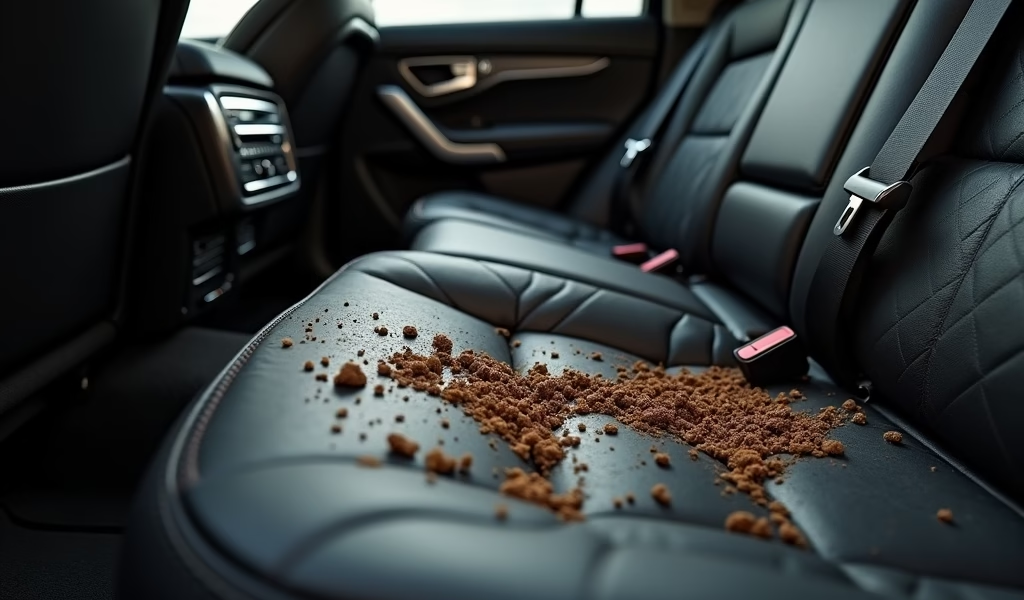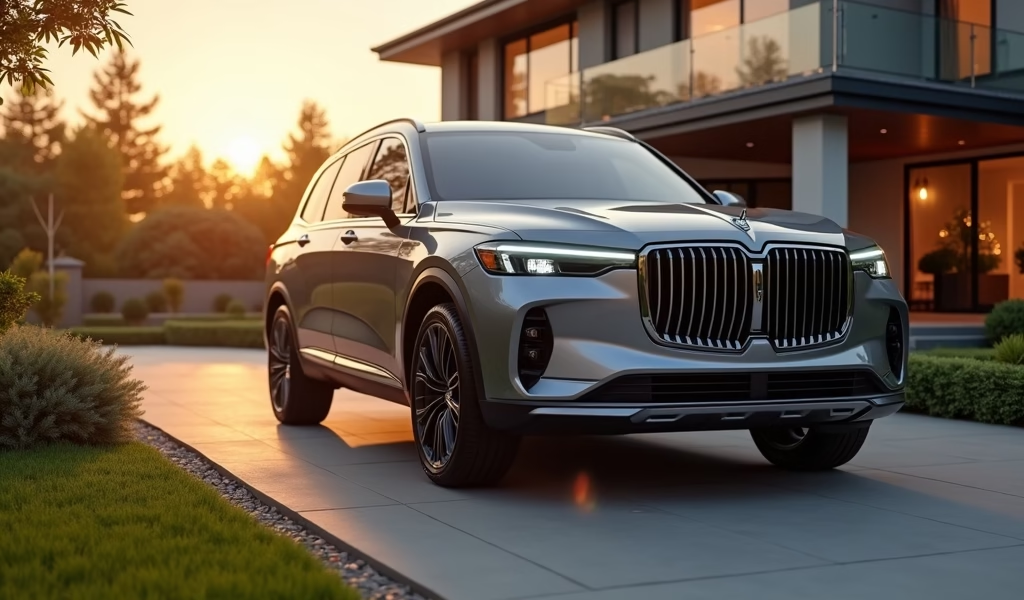Overview
This article provides seven expert maintenance tips for luxury family vehicles, including regular service schedules, proper cleaning techniques, tire care, battery maintenance, fluid checks, electronic system care, and climate control system upkeep. The guide emphasizes that following these specialized care practices helps preserve both the mechanical integrity and luxurious appeal of high-end family cars, ultimately protecting the investment and maintaining performance over time.
Table of Contents
- Introduction to Best Luxury Family Cars
- How to Choose the Right Luxury Family Car
- Tip 1: Regular Maintenance Schedules
- Tip 2: Proper Cleaning and Detailing
- Tip 3: Tire Care and Rotation
- Tip 4: Battery Maintenance
- Tip 5: Regular Fluid Checks and Changes
- Tip 6: Caring for Electronic Systems
- Tip 7: Climate Control System Maintenance
- Conclusion
- Frequently Asked Questions
Introduction to Best Luxury Family Cars
When it comes to combining family-friendly functionality with opulent comfort, the best luxury family cars deliver an exceptional driving experience without compromising on practicality. As a mechanic who’s spent over 15 years working on high-end vehicles, I’ve seen firsthand how proper care can extend the life of these premium investments. Luxury family cars aren’t just about the prestigious badges—they represent sophisticated engineering, advanced safety technology, and refined comfort features designed for both parents and children.
According to recent market research, the luxury family car segment has grown by 18% since 2020, with more families prioritizing comfort, safety, and technological features. These vehicles typically cost between $50,000 and $120,000, representing significant investments that deserve proper care. The good news? With the right maintenance approach, these vehicles can maintain their performance and value far longer than their more modest counterparts.
In this comprehensive guide, I’ll share seven professional care tips specifically tailored for luxury family vehicles that will help preserve both their mechanical integrity and luxurious appeal. Whether you drive a Mercedes-Benz GLE, BMW X7, Audi Q7, or any other premium family hauler, these expert recommendations will keep your vehicle running smoothly for years to come.
How to Choose the Right Luxury Family Car
Before diving into maintenance tips, it’s worth considering what makes a luxury car family-friendly in the first place. The best luxury family cars skillfully balance performance with practicality, offering spacious interiors without sacrificing the driving dynamics that luxury brands are known for.
When evaluating options, consider these key factors:
- Interior space: Look for three-row seating if you have multiple children or regularly transport extra passengers
- Safety features: Premium driver assistance systems like adaptive cruise control, lane-keeping assistance, and automatic emergency braking
- Comfort amenities: Multi-zone climate control, heated/ventilated seats, and noise insulation
- Technology: User-friendly infotainment systems compatible with smartphones and rear-seat entertainment options
- Cargo capacity: Sufficient trunk space for family gear, with flexible seating configurations
According to Consumer Reports, luxury vehicles with the highest owner satisfaction rates tend to combine these practical elements with distinctive styling and exceptional build quality. The most satisfied owners report spending 20% less on unexpected repairs during the first five years of ownership when following manufacturer-recommended maintenance schedules.
Now that we understand what makes these vehicles special, let’s explore how to keep them in peak condition with seven professional care tips.

Tip 1: Regular Maintenance Schedules
The cornerstone of luxury vehicle care is adhering to a disciplined maintenance schedule. Unlike standard vehicles, premium models often have specific service intervals and requirements that directly impact their performance and longevity.
Most luxury manufacturers recommend service intervals every 10,000 to 15,000 miles, but this can vary significantly based on the model and driving conditions. For instance, the BMW X7’s condition-based service system monitors various parameters and alerts you when service is needed, rather than following a fixed mileage schedule.
Key regular maintenance tasks include:
- Oil changes using manufacturer-specified synthetic oils
- Air filter replacements (both engine and cabin filters)
- Brake inspections and fluid changes
- Transmission service (typically every 30,000-60,000 miles)
- Coolant system checks and flushes
According to a study by J.D. Power, luxury vehicles that receive regular dealer-recommended maintenance retain approximately 15-20% more of their value over a five-year period compared to those with sporadic service histories. While dealer service centers may charge premium rates, they offer specialized knowledge and use factory parts that maintain your vehicle’s integrity.
If you’re looking to save on maintenance costs, consider researching certified independent specialists who focus on your specific brand. Many former dealer technicians establish independent shops that offer comparable expertise at more competitive rates while still using genuine parts.
Tip 2: Proper Cleaning and Detailing
Luxury family cars feature premium materials that require specialized care. From Nappa leather seats to real wood trim and sophisticated paint finishes, proper cleaning techniques preserve both appearance and value.
For exterior care, I recommend a two-bucket washing method to prevent swirl marks, followed by a high-quality carnauba or ceramic wax application every three months. Ceramic coatings, while more expensive initially (typically $500-1,500), can provide protection for up to two years and make cleaning much easier—particularly valuable for family vehicles that encounter everything from juice spills to muddy cleats.
When it comes to interior maintenance:
- Use leather conditioners specifically formulated for automotive upholstery every 2-3 months
- Clean wood and piano black trim with dedicated products that don’t leave residue
- Vacuum regularly using soft brush attachments to prevent scratching delicate surfaces
- Consider protective treatments for carpets, especially in foot well areas
- Use microfiber cloths for touchscreens and displays to prevent scratches
A 2023 survey by AutoTrader revealed that vehicles with well-maintained interiors commanded 12% higher resale values than comparable models with worn or stained cabins. For families, I recommend keeping a small cleaning kit in the vehicle for immediate attention to spills, as many luxury materials can stain permanently if substances are allowed to set.
Remember that many luxury vehicles have unique material combinations that may require different care products. Always check your owner’s manual for specific recommendations before applying any cleaning product, particularly to specialized materials like Alcantara or open-pore woods.
Tip 3: Tire Care and Rotation
Luxury family cars often come equipped with high-performance or run-flat tires that require special attention. These specialized tires can cost significantly more than standard options—typically $250-500 per tire—making proper care essential for maximizing their lifespan.
Maintain proper tire pressure according to manufacturer specifications, not the maximum PSI printed on the tire sidewall. Luxury vehicles often have tire pressure monitoring systems (TPMS), but I still recommend checking pressures manually once a month, as these systems typically only alert you when pressure is dangerously low.
Rotation patterns matter significantly for all-wheel-drive luxury vehicles. Most manufacturers recommend rotation every 5,000-7,500 miles, following specific patterns outlined in your owner’s manual. Some modern luxury SUVs use staggered tire setups (wider tires in the rear), which limits rotation options but still requires regular position changes.
For families in areas with distinct seasons, consider dedicated winter tires rather than attempting to use all-seasons year-round. According to testing by Tire Rack, premium winter tires can improve braking distances by up to 30% in snow and ice compared to all-season tires—a significant safety advantage for family transport.
Alignment is particularly important for luxury vehicles with advanced driver assistance systems. Even slight misalignments can affect these systems’ calibration and cause premature tire wear. I recommend alignment checks annually or whenever you notice the vehicle pulling to one side.
Tip 4: Battery Maintenance
Modern luxury family cars contain sophisticated electronics that place substantial demands on their electrical systems. From adaptive headlights to massaging seats and complex infotainment systems, these features rely on consistent power delivery.
Most luxury vehicles use Absorbent Glass Mat (AGM) batteries rather than traditional lead-acid batteries. These AGM batteries typically last 5-7 years compared to 3-5 years for standard batteries but cost considerably more—often $200-400 for the battery alone. Their replacement usually requires specialized tools and sometimes computer reprogramming, making this a job best left to professionals.

Tip 5: Regular Fluid Checks and Changes
Luxury vehicles utilize specialized fluids engineered for their specific mechanical systems. From long-life coolants to synthetic differential oils, these fluids play crucial roles in system protection and performance.
Beyond the obvious engine oil changes, several other fluids require regular attention:
- Transmission fluid: Many luxury automatic transmissions now use “lifetime” fluids, but I strongly recommend changes every 60,000 miles for prolonged transmission life
- Brake fluid: Should be replaced every 2-3 years regardless of mileage due to its hygroscopic nature (absorbs moisture over time)
- Power steering fluid: Often overlooked but should be checked regularly for proper level and condition
- Coolant: Long-life formulations typically need replacement every 5-7 years
- Differential and transfer case fluids: Particularly important in AWD luxury SUVs, recommended changes every 30,000-50,000 miles
According to data from the luxury used car market, vehicles with documented fluid service histories typically command 8-12% higher resale values and experience 25% fewer major mechanical failures over their lifetime.
One often overlooked area is the air conditioning system, which should receive attention every 2-3 years. Luxury climate control systems are remarkably complex, with multiple zones and sophisticated filtration. Regular refrigerant checks and cabin filter replacements keep these systems functioning optimally.
When replacing fluids, always use OEM or manufacturer-approved products. Many luxury brands engineer specific fluid formulations for their vehicles, and using incorrect alternatives can cause system damage or reduced performance. The minor cost difference for premium fluids pays dividends in system longevity.
Tip 6: Caring for Electronic Systems
Luxury family cars are essentially computers on wheels, featuring dozens of electronic control units (ECUs) that manage everything from engine performance to ambient lighting. Keeping these systems functioning properly requires specific care approaches.
Software updates are critical for modern luxury vehicles. Unlike traditional cars where mechanical components were the focus, today’s premium models receive regular software updates that improve functionality, fix bugs, and sometimes even enhance performance. Most manufacturers now offer over-the-air updates, but some still require dealer visits.
To maintain electronic system health:
- Allow the vehicle to complete its startup cycle before driving (usually indicated by all warning lights cycling off)
- Don’t disconnect the battery without first consulting your manual or a professional
- Use a battery maintainer during extended storage periods to prevent system memory loss
- Periodically check for available software updates if your vehicle doesn’t offer automatic notifications
- Address warning lights promptly rather than ignoring them, as minor issues can cascade into major problems
Research from the Automotive Service Association shows that approximately 60% of luxury vehicle repairs now involve electronic diagnosis rather than mechanical repair. When choosing service providers, ensure they have access to manufacturer-specific diagnostic equipment and the latest technical service bulletins.
For families with tech-savvy teens who might be driving these vehicles, consider setting electronic limiters and monitoring systems, which many luxury brands now offer. These can restrict speed, monitor driving habits, and even set geographic boundaries—features that provide peace of mind while protecting your investment.
Tip 7: Climate Control System Maintenance
The climate control systems in luxury family cars go far beyond basic heating and cooling, often featuring multi-zone temperature regulation, air purification systems, fragrance dispensers, and seat heating/ventilation. These sophisticated systems require specific maintenance to function properly.
The most important yet often neglected maintenance item is the cabin air filter replacement. These filters not only affect air quality but can impact the entire HVAC system’s performance if clogged. For family vehicles that frequently transport children—especially those with allergies—I recommend premium activated carbon filters replaced every 10,000-15,000 miles rather than the standard 15,000-30,000 mile intervals.
Periodic inspection of the air conditioning condenser (located in front of the radiator) is also crucial. This component can collect debris that restricts airflow and reduces cooling efficiency. During summer months, gently spray this area with water to remove accumulated bugs, leaves, and road debris.
For vehicles with fragrance systems (common in Mercedes-Benz, BMW, and some other premium brands), ensure that you’re using manufacturer-approved scent cartridges. Aftermarket alternatives may seem economical but can damage these sensitive systems and void warranties.
According to the Environmental Protection Agency, indoor air quality in vehicles can be 2-5 times worse than outdoor air, making proper climate system maintenance particularly important for family health. Regular maintenance not only improves comfort but contributes to overall wellness during daily commutes and long family road trips.
Conclusion
Owning one of the best luxury family cars on the market is a blend of practicality and indulgence—combining the space and safety families need with the refinement and performance luxury buyers expect. By following these seven professional care tips, you’ll not only protect your substantial investment but also ensure that your vehicle continues to deliver the premium experience it was designed for.
Remember that preventative maintenance is always more economical than reactive repairs, especially with luxury vehicles where parts and labor come at premium prices. Establishing a relationship with qualified service professionals who understand your specific model can make a significant difference in both maintenance quality and ownership costs over time.
Most importantly, maintain detailed service records whether you service at dealerships, independent specialists, or handle some maintenance yourself. These records not only help you track maintenance needs but become invaluable when it’s time to sell or trade your vehicle.
With proper care, today’s best luxury family cars can provide 150,000+ miles of reliable service while maintaining much of their original character and comfort—turning what might initially seem like a lavish expense into a sound long-term investment in your family’s comfort, safety, and driving enjoyment.
Frequently Asked Questions
What is the average lifespan of a luxury family car?
With proper maintenance, most luxury family cars can exceed 150,000 miles or 10-15 years of service. Premium components and build quality generally contribute to longevity that surpasses many non-luxury vehicles when properly maintained.
Are luxury family cars more expensive to insure?
Yes, luxury family cars typically cost 20-40% more to insure than mainstream models due to higher repair costs and replacement values. Many insurance companies offer specific luxury vehicle policies with better terms for these premium vehicles.
Should I take my luxury family car to the dealership or an independent mechanic?
Dealerships offer specialized training and equipment but at premium prices, while qualified independent specialists can provide comparable service at lower costs. For complex electronic issues and warranty work, dealerships are often the better choice.
How often should I detail my luxury family car?
Professional detailing is recommended 2-4 times per year for luxury vehicles, with more frequent basic cleaning as needed. Families with young children may benefit from quarterly professional interior detailing to address spills and prevent permanent damage to premium materials.
Do luxury family cars have better resale value?
Well-maintained luxury vehicles from established brands like Mercedes-Benz, BMW, and Lexus typically retain 45-55% of their value after five years. Maintenance records, original options, and popular color combinations significantly impact resale values.

